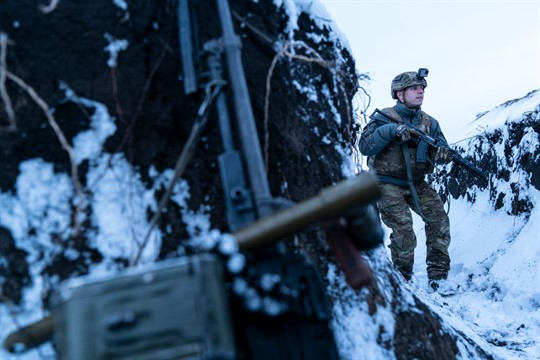
For the better part of six years since Russia and Ukraine signed the Minsk II cease-fire accord for the disputed eastern Ukrainian region of Donbass, one question has loomed: How will the U.S. and NATO respond if Russian troops again cross back over the so-called Line of Contact, dividing Ukrainian forces from Russian-backed separatists? With reports now trickling in of a buildup of Russian military forces along the border and in Crimea, Washington and Brussels may need quick answers soon.
In response to those reports, U.S. Secretary of State Antony Blinken spoke this week with his Ukrainian counterpart, Dmytro Kuleba, while the chairman of the Joint Chiefs of Staff, Gen. Mark Milley, called top Russian and Ukrainian military officials. The State Department said Blinken reaffirmed U.S. support for Ukraine “in the face of Russia’s ongoing aggression” and “expressed concern about the security situation in eastern Ukraine.” The commander in chief of Ukraine’s armed forces, Ruslan Khomchak, and his Russian counterpart, Valery Gerasimov, traded accusations about the escalation of clashes in the Donetsk area of Donbass that has led to a number of deaths. Social media posts on Twitter showing Russian tanks being transported by train across Crimean territory and near the Russian city of Krasnodar have not yet been verified. Nonetheless, Gen. Tod D. Wolters, the head of the U.S. European Command, told The New York Times that it has placed American troops on heightened alert
 Eurasia Press & News
Eurasia Press & News


